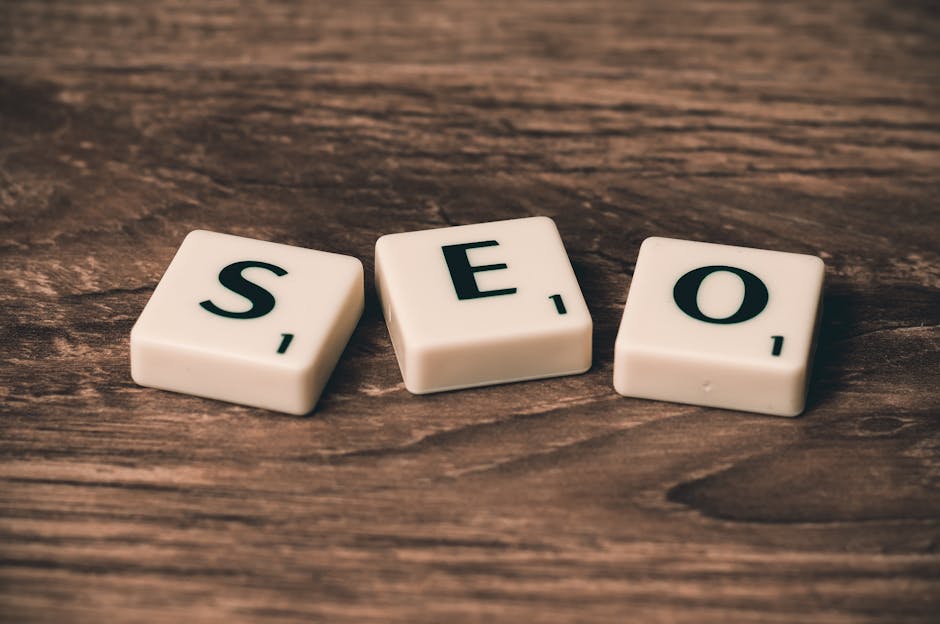Table of Contents
- The Google Business Profile, Still The Big Kahuna
- Mobile Speed: Are We Moving Like Molasses?
- Reviews: Are You Listening Or Just Hoarding Stars?
- User Experience on Mobile: It’s Not Just How It Looks
- Schema Markup and Voice Search: Talking to Machines
- The Future is Already Here: Geo-Fencing and Beyond
- Final Thoughts: Don’t Be a Mouth-Breather
Alright, let’s talk about it. No, not about your cousin Barry’s dodgy mobile phone repair shop down the road, though that’s a local business ain’t it, but about something way more important: how folks find those places on their phones. We’re deep into 2025 now, and if your business ain’t showing up sharpish on someone’s mobile when they’re standing outside your competitor’s shop, well, you’re just giving money away. Plain and simple. I’ve been kicking around this digital space long enough, seen trends come and go, most of ’em a load of codswallop if you ask me, but this mobile optimization for local SEO thing, it’s not going anywhere. It’s the very bread and butter. You just can’t argue with it.
It’s actually a bit daft how many businesses still trip over this. They spend a king’s ransom on some flashy website, then wonder why the local punters ain’t beating a path to their door. Then you pull up their site on your phone, and it’s a dog’s dinner, takes forever to load, buttons are tiny, can’t find the contact number for love nor money. Honestly, sometimes I wonder if these people even use their own phones. You wouldn’t put a brick through your own shop window, would ya? But a slow, clunky mobile site, that’s just about the same thing in this digital age. What’s the point of having a physical location if people can’t find you on the thing they carry everywhere?
The Google Business Profile, Still The Big Kahuna
Right, so first things first, and this ain’t rocket science, Google Business Profile, used to be called Google My Business, it’s the absolute core of your local digital presence. Without it, you’re pretty much invisible. You gotta claim it, verify it, and then treat it like your prized pet. Feed it. Groom it. Make sure every single detail on there is spot on. I’m talking hours, services, photos that don’t look like they were taken with a potato. People are searching “plumber near me,” “best coffee shop in town,” right from their pocket. You show up there, with a decent picture of your shop front, some honest reviews, and a working phone number, you’re already miles ahead of half the competition. You wouldn’t believe the number of places that have the wrong hours listed. Bonny, that is.
And those photos, seriously, make them good. Not just a blurred snap. Show your products, your team, your shop looking spick and span. Someone’s gonna decide if they walk into your place or the one down the street purely on those images. They might be looking for something to do on a Saturday afternoon, right? They’re on their phone, swiping through pictures. You think a blurry, pixelated shot is gonna get ’em in the door? No chance, mate. I tell clients all the time, your GBP is your new storefront. You wouldn’t leave your real one covered in grime, would you? This one’s for the whole world to gawp at.
What’s that you ask? “How often should I update my Google Business Profile information?” Well, how often do your opening hours change? Or your services? Or your seasonal specials? I’d say whenever there’s a significant change, obviously. But also, think about adding new photos regularly, maybe a post about a new product or a special offer. It tells Google you’re active, and it gives potential customers a reason to look. It’s like keeping the lights on.
Mobile Speed: Are We Moving Like Molasses?
This really grinds my gears. You can have the prettiest website in the world, the best products, a smile that’d melt butter, but if your site takes three seconds plus to load on a mobile connection, especially out where the signal is a bit sketchy, people are gone. Pooof. Just like that. Their thumb is already on the back button. It’s like waiting for a kettle to boil when you’re gagging for a brew. Who’s got time for that? Nobody. Not anymore. Google knows this too, that’s why mobile-first indexing has been a thing for ages. Your mobile site is now the main show, not some afterthought. The desktop version is almost a side act these days. It really is.
I see so many small businesses still using ancient themes or bloated page builders on platforms like WordPress or Shopify. They load up on plugins they don’t need, high-res images that aren’t optimized. It’s a proper mess. You gotta compress those images, use lazy loading, minify your code, all that techy stuff. Don’t know how? Get someone who does. I mean it. Companies like WebFX and Thrive Agency make a good living just sorting out this kind of digital plumbing for businesses. It’s not optional, this speed thing. It’s foundational for proper mobile optimization for local SEO.
It just blows my mind, how many small business owners will haggle over a few quid for a decent SEO job but then wonder why their website is slower than a wet week in Glasgow. Your mobile site’s speed is a massive ranking factor for local searches. If someone’s searching for a pizza place on their phone, starving, they ain’t waiting for your fancy animations to load. They just ain’t. They’ll click on the next place, the one that loads instantly. And that, my friend, is a lost customer. You just lost a potential lifelong customer over a few milliseconds. Pretty gutted, wouldn’t you be?
Reviews: Are You Listening Or Just Hoarding Stars?
Okay, reviews. Everyone bangs on about getting five stars, don’t they? And sure, it’s good to have ’em. People look at ’em. But I’ll tell you something, a heap of five-star reviews from folks named “User12345″ or “LocalGuide987″ with no profile picture, all posted on the same day? That’s sketchier than a back alley on a Tuesday night. You’d be better off with a few honest four-star reviews, even a three-star with a thoughtful response, than a pile of obviously fake ones. People ain’t stupid. They can sniff out a fake review a mile off. And Google, bless its little heart, it’s getting smarter too.
“Should I respond to all reviews, even negative ones?” You better believe it, sunshine. Especially the negative ones. It shows you’re paying attention, that you care. Even if the person writing it is clearly not playing with a full deck and talking absolute rubbish, respond politely, offer to make it right, take it offline. It says to everyone else looking: “This business cares about its customers.” That’s gold, that is. Doesn’t mean you gotta roll over and let people walk all over you, but a thoughtful response is always a good shout. What’s the alternative, let it fester?
Look at what agencies like Whitespark do. They’ve got tools and advice all about reputation management, helping businesses get legitimate reviews and manage ’em proper. It’s not just about getting reviews, it’s about managing your online rep. You know, making sure your virtual shop window looks tidy, not like someone’s thrown a dog’s dinner at it. People trust other people. And these days, “other people” means strangers on the internet telling them if your business is worth their time or not.
User Experience on Mobile: It’s Not Just How It Looks
This goes beyond just speed. We’re talking about how people actually use your mobile site. Can they find your phone number with one tap? Is your address clickable, so it opens right up in Apple Maps or Google Maps? If you’re a restaurant, can they book a table without zooming in with a magnifying glass? This is crucial for mobile optimization for local SEO. If someone’s standing on the street corner, phone in hand, looking for a place to eat, they need that menu, that reservation link, instantly. Not after a five-minute scavenger hunt on your site.
I saw a website the other day for a local solicitor, right? Needed to find their contact page. Took me three clicks and a lot of scrolling. On a phone. Who’s got time for that? If I’m in a pickle and need a solicitor, I want to call ’em, pronto. I don’t want to play hide-and-seek with your phone number. These small frustrations, they stack up. They turn into “I’ll try the next guy” faster than you can say ‘bob’s your uncle’. I swear, some designers just build for desktops and then go, “Eh, good enough for mobile.” No, it ain’t. It’s not even close.
It’s about making it dead easy. Big, clear buttons. Forms that don’t make you want to chuck your phone out the window. Text that’s readable without having to pinch and zoom. Remember, people use their phones one-handed a lot of the time. Think about how your finger moves. Are the most important things right where their thumb naturally falls? Small things, but they make a massive difference. Seriously, Sterling Sky talks about this stuff all the time, the nitty-gritty of making the user journey seamless for local searchers.
Schema Markup and Voice Search: Talking to Machines
This one’s a bit more behind the scenes, but just as important for mobile optimization for local SEO. Schema markup. You know, that fancy code that tells search engines exactly what bits of information on your page are what. Your business type, your address, your opening hours, reviews, services. All that good stuff. It helps Google understand your business better, and when Google understands, it can show your info in those rich snippets, those quick answer boxes, which are super prominent on mobile. Don’t ignore it. It’s like giving Google a direct instruction manual for your business.
And voice search. “Hey Google, find me a dry cleaner near me.” “Siri, where’s the nearest barber?” This is how a lot of people are searching these days, especially when they’re driving or their hands are full. The queries are often more conversational, longer, and location-specific. Your content needs to be set up to answer those specific questions directly. If your website has an FAQ section, that’s actually proper useful for this. Think about how someone would ask about your services, not just what keywords you think they’d type.
“Does voice search change how I write my website content?” Absolutely it does. People don’t talk like they type. They’re not saying “best dentist NYC” into their phone. They’re saying “What’s the best dentist near Central Park that’s open on Saturdays?” See the difference? Your content needs to answer these longer, more natural questions. It’s about being the direct answer to a direct question, not just a bunch of keywords flung out there. You gotta think like a human, not a search bot.
Local Citations and NAPs (Name, Address, Phone)
This is one of those boring but essential bits of mobile optimization for local SEO. Citations. Everywhere your business name, address, and phone number (NAP) are listed online outside of your own website. Think Yelp, TripAdvisor, industry-specific directories, even your local chamber of commerce site. Consistency is the name of the game here. If your address is slightly different on one site compared to another, or your phone number has a hyphen on one and a space on another, Google gets confused. And a confused Google doesn’t rank you. Simple as that. It’s like trying to find your way somewhere with half a map.
It doesn’t matter if it’s a big directory or some niche site. Every single inconsistent listing is a little dent in your trust score with Google. It’s a pain in the backside to go through and fix ‘em all, I know. But it’s vital. Some of these older directories, they’re still kicking around, like the fag-end of a bad habit. You gotta make sure your details are consistent across all of them. It’s not a suggestion, it’s a rule.
Mobile Content Strategy: Not Just Shoving Desktop Text
You can’t just take your desktop website copy and dump it on mobile. Doesn’t work like that. People read differently on a small screen. They skim. They want quick answers. Big blocks of text? Forget about it. They’ll bail faster than a politician on a promise. Use shorter paragraphs, bullet points (used sparingly, of course, because too many are boring), headings, bold text. Make it easy on the eye.
Think about the user journey on mobile. Someone lands on your page from a local search. What do they need to know immediately? Your contact info. What services do you offer? Your location. Get that stuff prominent, right at the top. The rest can come later. Your “About Us” story? Save that for folks who stick around. The immediate stuff for the folks on the go. This is probably the least sexy part of mobile optimization for local SEO, but it’s critical.
Mobile Security: SSL and All That Jazz
This one’s a no-brainer. If your website ain’t got an SSL certificate (that’s the little padlock in the browser bar, showing ‘https’ instead of ‘http’), Google ain’t gonna treat it right. And visitors, especially on mobile, they’re seeing warnings, they’re getting twitchy. You wouldn’t walk into a shop that looked like it was about to fall down, would you? Same principle. It’s a basic trust signal. If you’re missing it in 2025, you’re either completely oblivious or you just don’t care, and neither looks good.
“Do I really need an SSL certificate if I don’t process payments on my site?” Yes, you do. It’s not just about payment security. It’s about data integrity and user trust. Google practically demands it for ranking, and browsers are putting up warnings if you don’t have it. It’s like having insurance. You hope you don’t need it, but you absolutely have to have it.
I reckon a lot of small businesses think this mobile optimization for local SEO is some black magic, but it’s not. It’s just common sense applied to a digital world. You wouldn’t open a physical shop with no sign, or a phone that doesn’t ring, would you? This is the digital equivalent of that. And if you’re not thinking about it, your competition sure is. And they’re probably taking your money, bless ‘em.
I remember this one guy, owned a bakery. Lovely cakes, proper tasty. But his website? Looked like something out of the early 2000s, and on a phone, it was impossible to use. Customers were calling him, “Can’t find your menu!” “Is that really your phone number?” He was getting frustrated, thought people were just being difficult. I pulled out my phone, showed him his own site. Took him a minute to even figure out how to scroll. His jaw just dropped. He didn’t even know it was that bad. He thought because it looked “fine” on his big desktop monitor, it was fine everywhere. What a load of old pony.
It’s actually quite simple. If people are using their phones to find businesses, and they are, your business needs to be ready for those phones. It’s not some fancy add-on. It’s the baseline. It’s not something you do when you “have time.” It’s something you get stuck into, right now. Or you might as well just put up a “Closed” sign. The money is in the mobile. Always has been for local searches, and it’s only getting more so. I’ve been doing this for twenty odd years, and if I know one thing for sure, it’s that ignoring the mobile searcher is like giving up before you even started.
The Future is Already Here: Geo-Fencing and Beyond
Look, we’re talking 2025, right? So it ain’t just about making your site load fast. We’re heading deeper into personalized, real-time local search. Think about things like geo-fencing. It’s not just about somebody searching for “shoes near me” when they’re three blocks away. It’s about a shop knowing someone who searched for “running shoes” a week ago is now walking past their door, and being able to push a special offer to their phone. That’s probably giving some people the willies, right? But it’s where things are headed. Google and Apple are already doing things with location data that make your head spin.
It gets even more granular. You’re in a shopping center, right? Your phone knows you’re in the shopping center. If a store inside that center has optimized correctly, Google could suggest it to you without you even searching, just based on your history and location. That’s the wild west of mobile optimization for local SEO. Not fully here for everyone yet, but it’s coming, like a freight train. Businesses that get their basic mobile optimization ducks in a row now are the ones that are gonna be ready for the next wave. Those that don’t? They’ll be left scratching their heads, wondering where all their customers went.
I mean, I saw some stats recently, some company, can’t remember who, said something like nearly 80% of local mobile searches result in a purchase within 24 hours. Think about that. You’re losing out on immediate sales. Immediate. That’s not future revenue, that’s right now money walking out the door. It’s a tragedy, honestly.
Final Thoughts: Don’t Be a Mouth-Breather
So, what’s the real takeaway here for mobile optimization for local SEO? It’s not just a nice-to-have. It’s not some fancy trick. It’s fundamental. If your customers are on their phones, and they are, then your business needs to be easily found and easily used on those phones. It needs to be clear, quick, and helpful. Get your Google Business Profile nailed down. Make sure your site loads like lightning on mobile. Get those consistent NAP citations sorted. Embrace good reviews and respond to the bad ones. Think about how someone actually uses their phone to find you, not how you wish they would.
Don’t be the business that wonders why everyone else is busy while you’re twiddling your thumbs. The tools are out there, the knowledge is out there. It’s just a matter of getting stuck in and doing it. And if you don’t, then I’ll just see you in about five years asking me why your business is flatlining. I’ll probably just offer you a beer and tell you, “I told you so.” It really ain’t rocket surgery, this stuff. It’s just paying attention to where your customers actually are.



